Don’t let the rain spoil your safari! When the skies open up and it starts to pour, you might wonder whether to go out for a drive or simply enjoy the comfort of your accommodation. We’re here to guide you on how to make the most of these wet weather conditions. Whether it’s embracing the unique sights and sounds of the park during a downpour or finding cozy activities to indulge in, our tips will ensure your safari experience remains unforgettable, rain or shine.

Book a Safari Today
Pros of Rainy Day Drives
- Enhanced Predator Sightings: The rain brings unique animal behaviors to the forefront. Predators like lions and leopards often mark their territories after rain, as the rain washes away their previous scent marks. This makes them more active and visible, especially along roadsides. Their need to re-establish territory boundaries means they’re on the move more often, giving visitors a better chance of spotting them. Additionally, another reason they mark territory when it rains is that the cooler weather conditions are less taxing on their energy. Marking territory is a very tiresome task, so doing it when it’s cooler helps them cover more ground while using less energy. And to prove our theory of this, over the rainy Christmas weekend, we had a few of these sightings. Imraan Ameen, a passionate photographer and experienced safari-goer, had an unforgettable encounter. He spotted a huge male lion strolling down the road in the pouring rain, just south of Leeupan. Similarly, Aaliyah Ameen witnessed a male leopard boldly marking its territory in the middle of the road, near the Marula Loop, in the rain. These sightings show that even in rainy conditions, game viewing can be remarkable!

2. Cooler Climate, Increased Animal Activity: The drop in temperature during rainy days stimulates more wildlife movement. For instance, animals like lions, which typically sleep during the day, are seen playing and being more active in the cooler weather, providing exceptional viewing opportunities. I myself had an incredible sighting of 12 lions all to myself in the middle of the road—a male, four females and their little cubs all jumping, chasing, and playing in the rain!
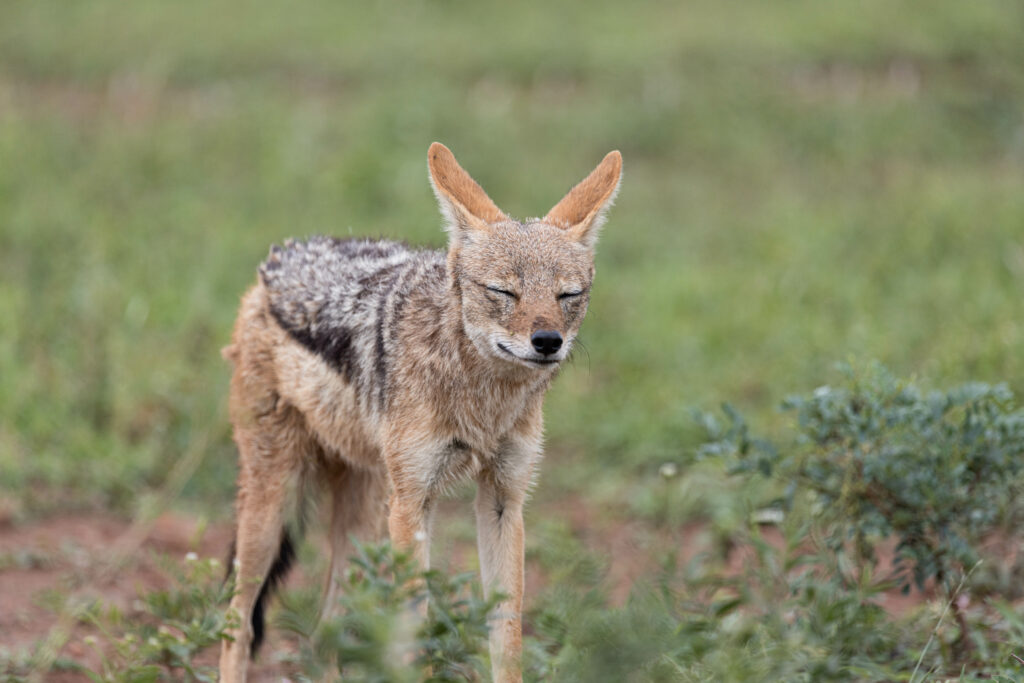
3. Open Sightings: On rainy days, animals like to stay out in the open. Unlike hot days, where they seek shade, cooler weather means you might find them resting in open areas, offering clear viewing opportunities. Since the sun is often obscured by clouds during rainy weather, the need for shade goes away. Animals can rest and even sleep in open areas without the risk of overheating.
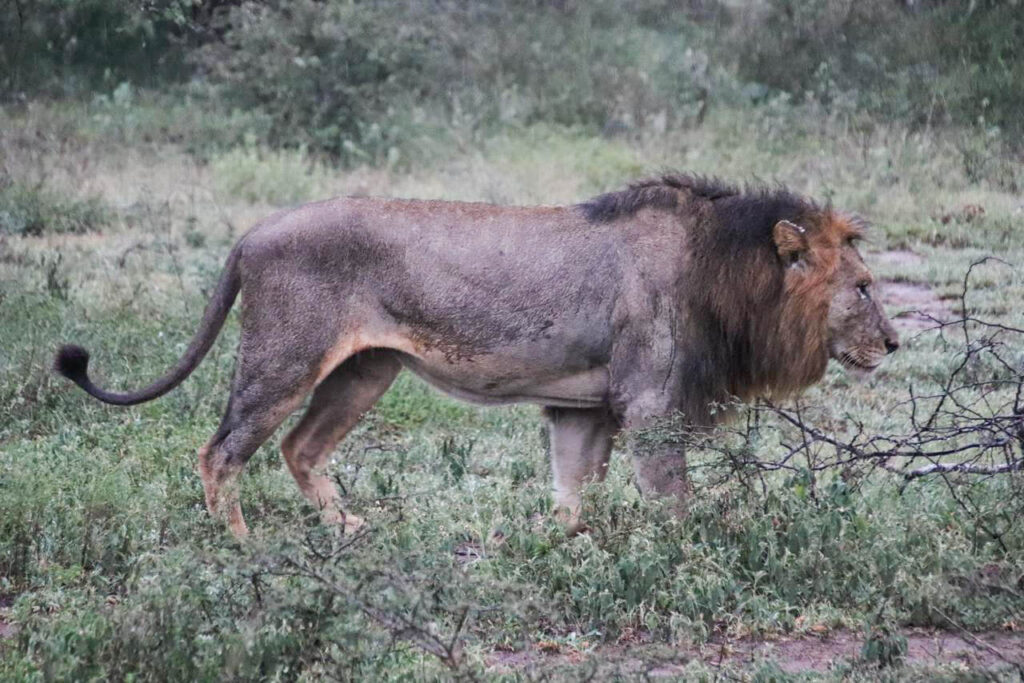
4. Predator Hunts: Lions and leopards are smart hunters, especially during rainy weather. When it rains, their prey, like zebras and antelopes, have a harder time staying alert. The rain makes it tough for these animals to see clearly, as the water droplets blur their vision. It’s not just their sight that’s affected; their sense of smell isn’t as good either. The rain fills the air with a fresh, earthy scent, which makes it difficult for them to pick up other smells, including the scent of lurking predators. Plus, their hearing isn’t as sharp. The sound of raindrops hitting the ground and the rumble of thunder can drown out the soft footsteps of lions or leopards sneaking up on them. So, lions and leopards use this rainy weather to their advantage. They know their prey is less aware and can’t sense them as well, making it easier to catch them by surprise.
Challenges of Rainy-Day Drives
- The Wet Challenge: Rainy days in the Kruger can turn driving into a real challenge. When it rains, you often need to keep the car windows closed to stay dry. This can make the drive a bit uncomfortable, especially if it gets warm and stuffy inside the car. Also, the rain can make it harder to see through the windshield. This is because the water droplets scatter the light, making everything outside look blurry.
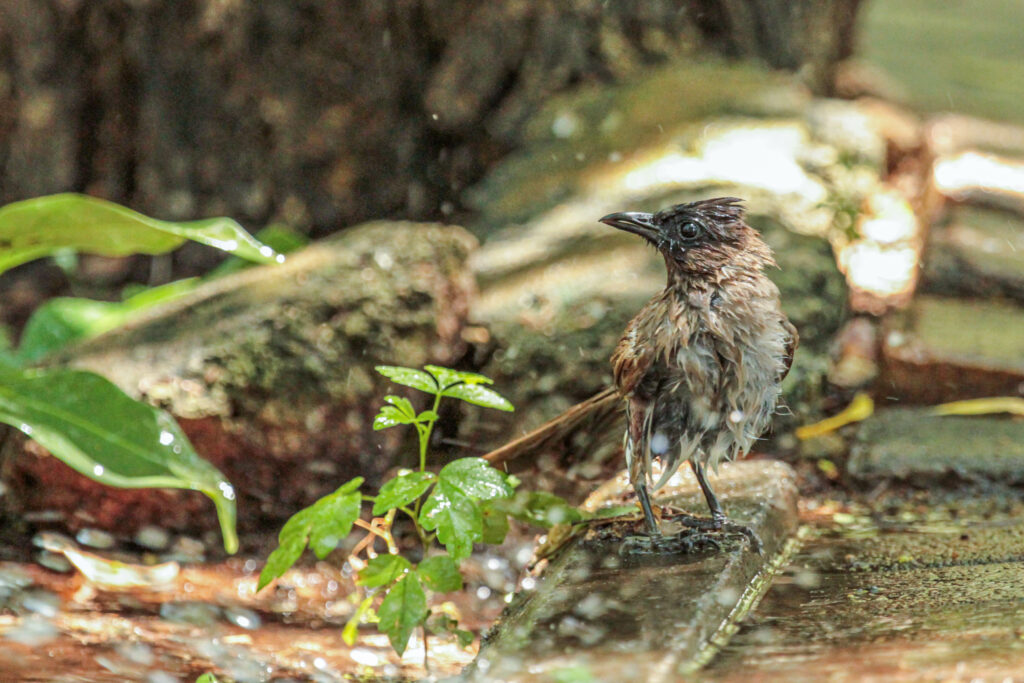
2. Less Reliance on Waterholes: Rainy days mean animals don’t have to venture to dangerous, crocodile-filled dams for a drink. Instead, they can drink from puddles on the road. Traditionally, animals in arid or semi-arid regions like the African savannah rely heavily on waterholes for hydration. These waterholes can be few and far between, forcing animals to travel long distances. During the rainy season, water becomes more easily available. Puddles and small pools of water form on roads, providing animals with easier and safer access to water. This abundance means animals no longer need to make long, exhausting treks to waterholes. Animals like hyenas and wild dogs are often tinged on rainy days on the LatestSightings.com App drinking from puddles on tar roads, which can be an exciting sight.
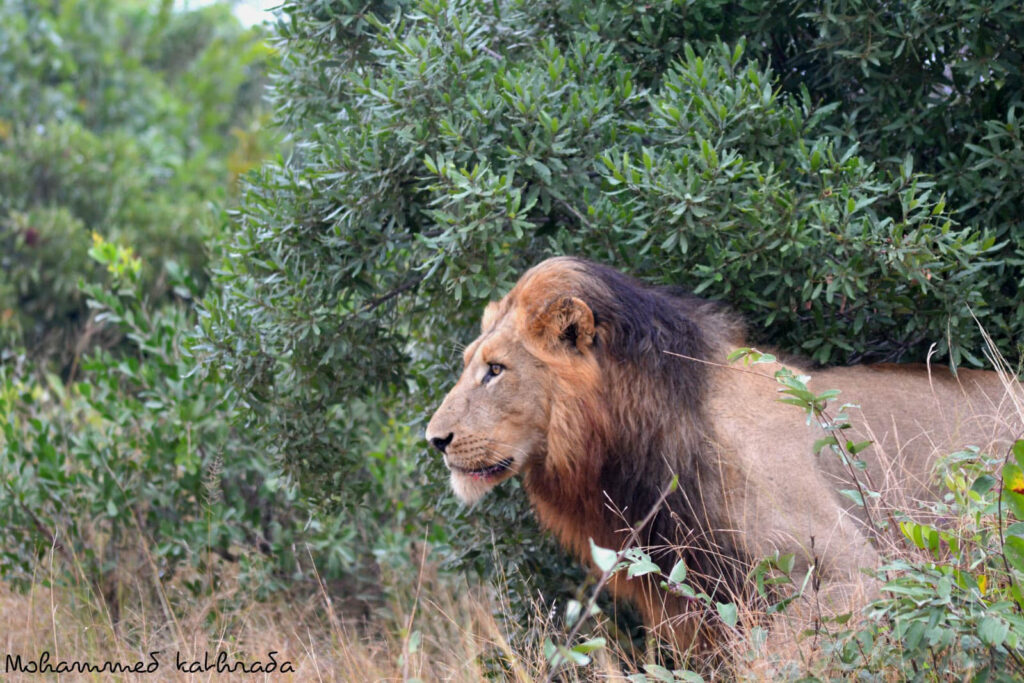
3. Limited Visibility: When it rains hard, spotting animals can be a bit tricky. Heavy rain can create a curtain of water between you and the wildlife, making it hard to see them clearly. But even with this challenge, Kruger National Park always has something amazing to show you. As we mentioned, the animals come to the roads during the rain, so even if the weather makes it hard to spot something, the possibility is still there.

4. Road Closures: Sometimes, if it rains a lot, some roads in the park might get closed. This is done to keep everyone safe. Heavy rain can make the roads slippery or even flood them. When this happens, it’s important to follow the park’s rules and stick to the open roads. This might mean you can’t go to all the places you planned to, but safety comes first!
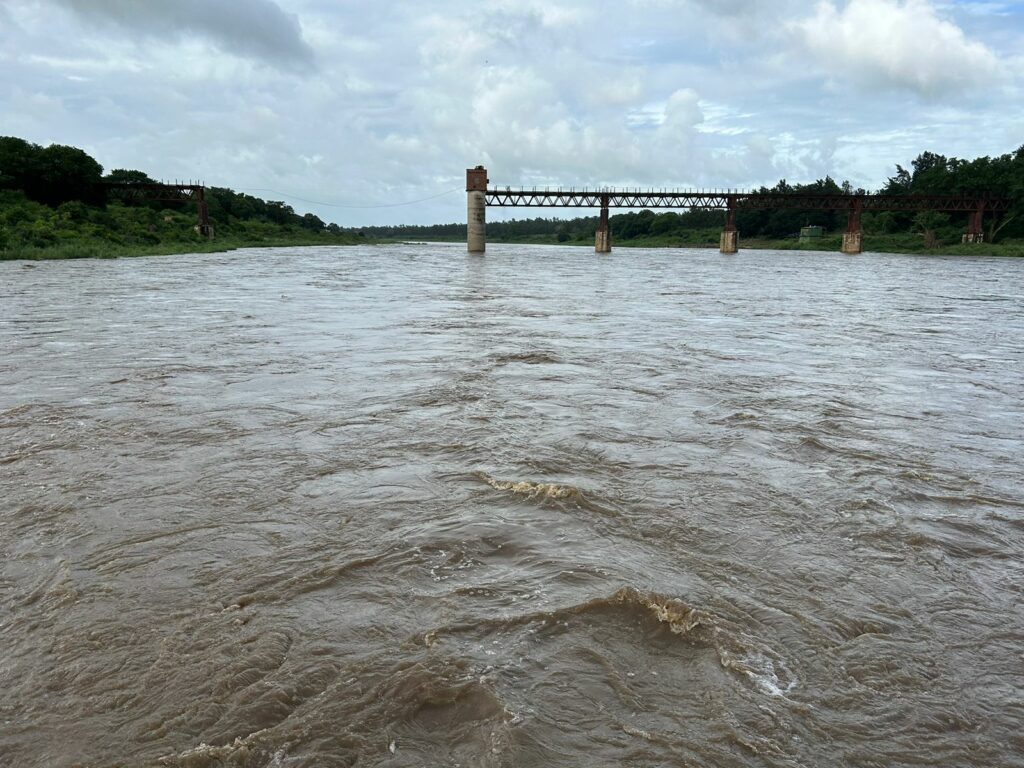
5. Muffled Bush Sounds: One of the coolest things about being in the bush is hearing all the different sounds, like birds chirping or animals calling out to each other. These sounds can even help you find where the animals are. But when you’re driving with the windows closed, it’s harder to hear these sounds. This means you might miss out on clues that could lead you to exciting wildlife sightings. So, while you’re keeping dry inside the car, remember that you might not hear all the amazing sounds of the bush as clearly as on a sunny day. This is a very important part of game viewing, especially in the summer when the bush is thick and leopards camouflage into the thickets. Hearing an impala or baboon’s alarm call can help you find the leopard even when it may be hiding. So yes, the fact that you need to drive with closed windows is a real downside to driving in the rain.
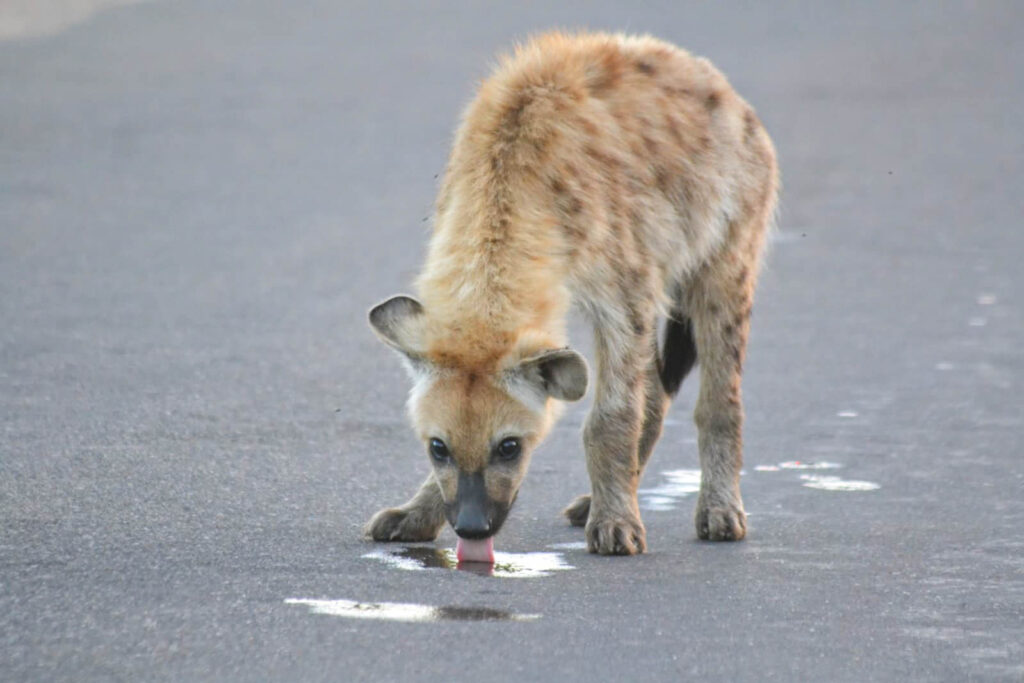
Alternatives to Driving
- Bird Hides: Bird hides are special shelters designed for watching birds and wildlife. They are usually made of wood and camouflaged to blend in with the surroundings, so animals don’t get scared away. Imagine a small wooden house with tiny windows, tucked away by a dam. Inside, you’ll find benches or chairs where you can sit quietly and look out. When it’s raining, these bird hides become even more magical. The sound of raindrops on the water is extremely calming. You can stay dry and cozy inside, looking out to see the different birds. Some birds love the rain and come out to play or hunt. For example, herons love to hunt in the rain as they stand in the shallow water, and the rain droplets create a disturbance on the surface of the water so the fish cannot see the danger above.
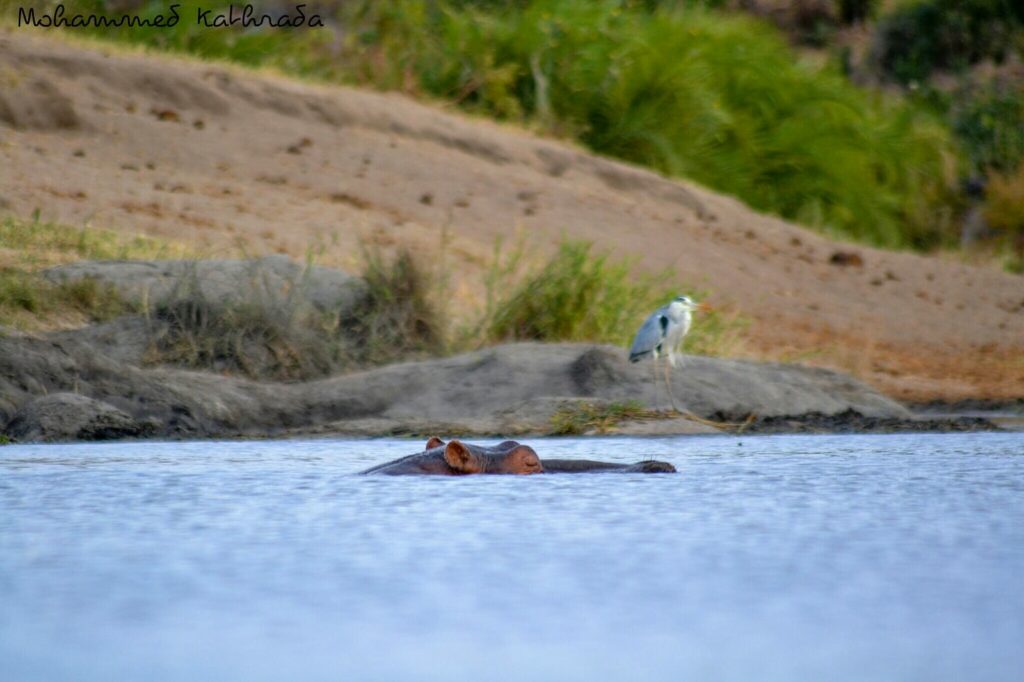
2. Relaxing in Camp: If you’re in camp and it starts to rain, don’t despair if you can’t get yourself to go out for a drive. You can enjoy the beauty of the rain from your camp veranda. A veranda is like a porch or covered outdoor area right outside your accommodation. You can sit there on a chair, wrapped in a warm blanket, and watch the rain. Listening to the rain while you’re safe and dry is very peaceful. You might hear the raindrops falling on the leaves and the distant rumble of thunder. It’s a chance to relax and feel connected to nature. You can read a book, sip on hot chocolate, or just watch the raindrops create ripples in the puddles. It’s a quiet, serene experience that lets you appreciate the natural beauty of the park in a different way.
Photography Tips for Rainy Days
- Protect Your Camera: It’s really important to keep your camera dry when it’s raining. Use special waterproof covers or even plastic bags to cover your camera. This way, you can take pictures without worrying about water damaging your camera.
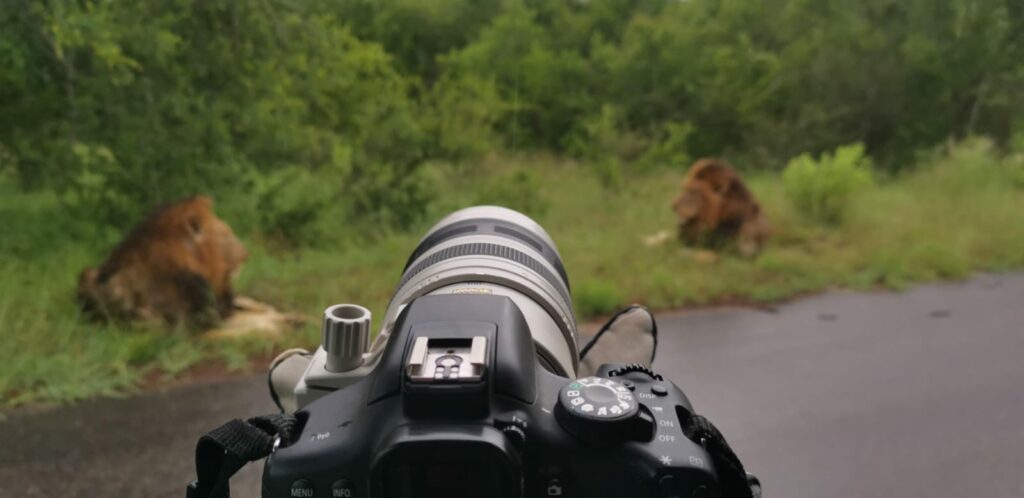
2. Right Settings for Low Light: Rainy days usually mean less sunshine and more clouds, making everything look a bit darker. To get good photos, you need to adjust your camera settings. If your camera has a ‘low light’ mode, use it. Otherwise, you can try increasing the ISO setting, which makes your camera more sensitive to light. Just remember, a higher ISO might make your photos a bit grainy.
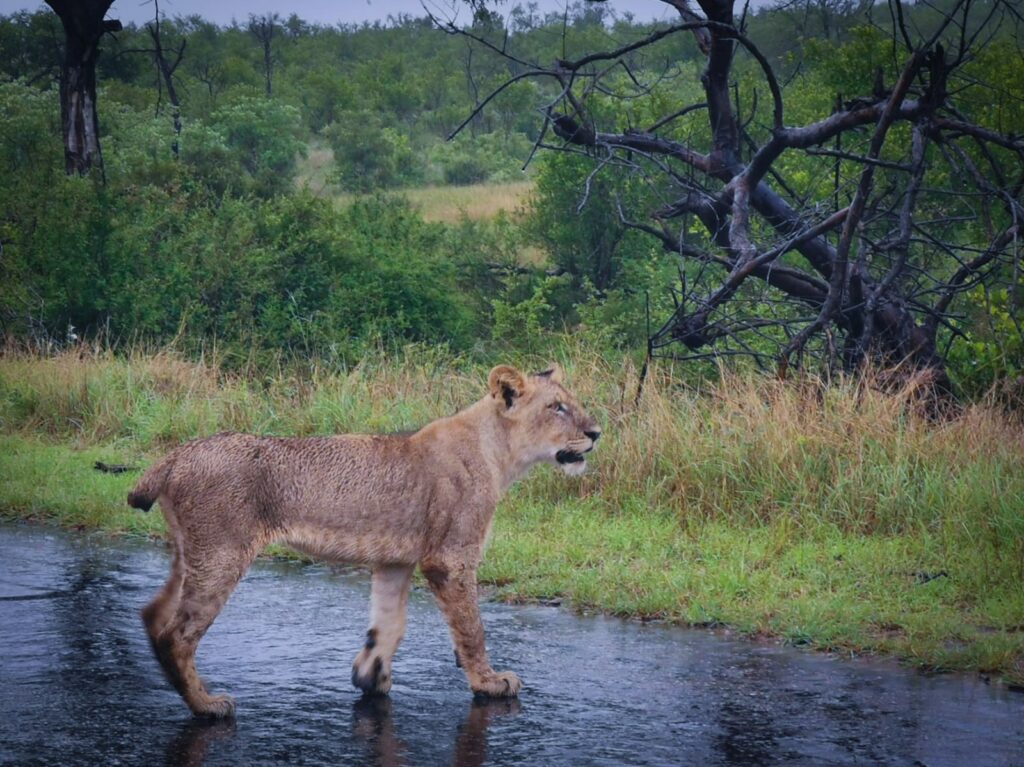
3. Capture Reflections and Rainbows: Rain can make ordinary places look magical! After or during the rain, look for puddles that reflect animals, trees, or the sky. These reflections can make your photos really special. Also, right after the rain, if the sun comes out, keep an eye out for rainbows. They can add beautiful colors to your photos. To capture a rainbow clearly, find a spot where you can see it against a dark background and use your camera’s landscape mode if it has one.
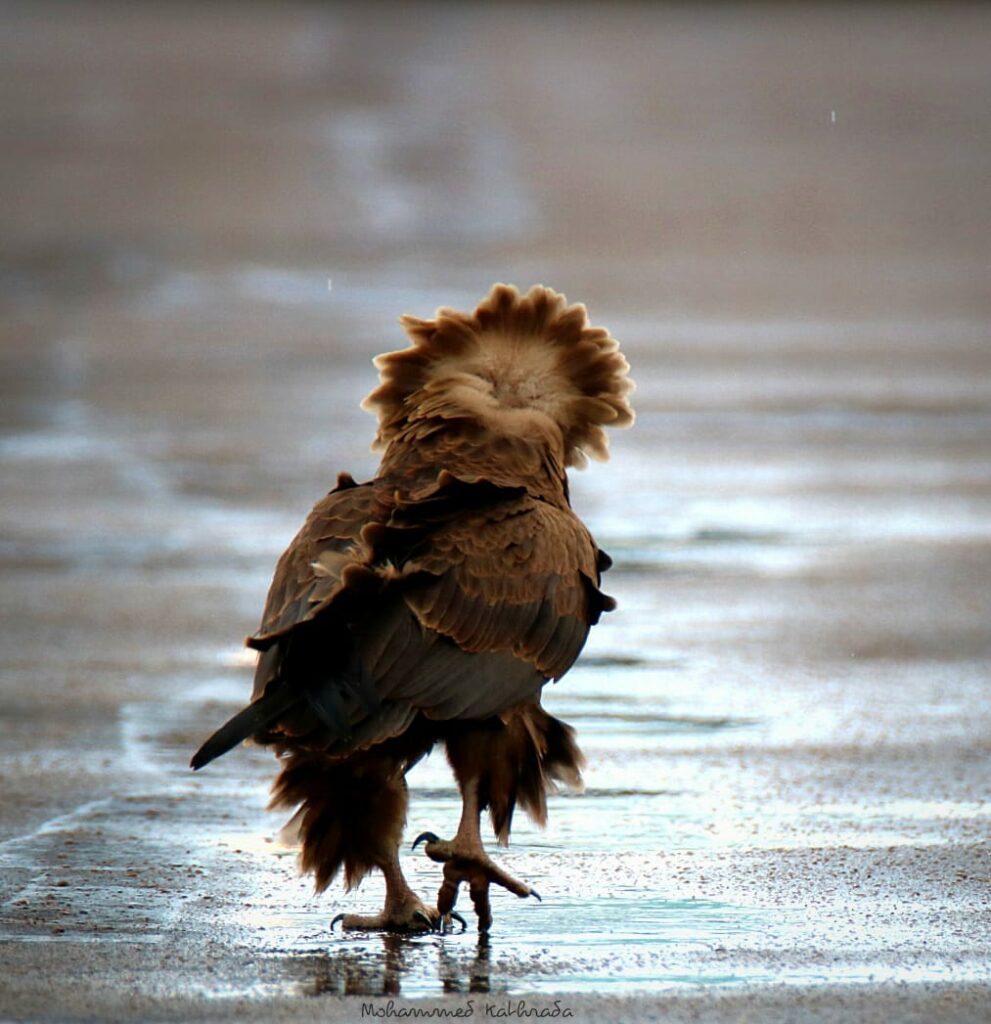
Rainy days in safari can be just as exciting as sunny ones! Even though the rain might make things a bit wet and tricky, it brings out a whole new side of the park. You get to see animals acting differently, and be more active because it’s cooler. Sure, it can be hard to see through the rain and you might have to keep your car windows shut, but the adventure is still there. So, remember, even if it’s pouring, there’s still lots of wildlife and beauty to be found on safari!
